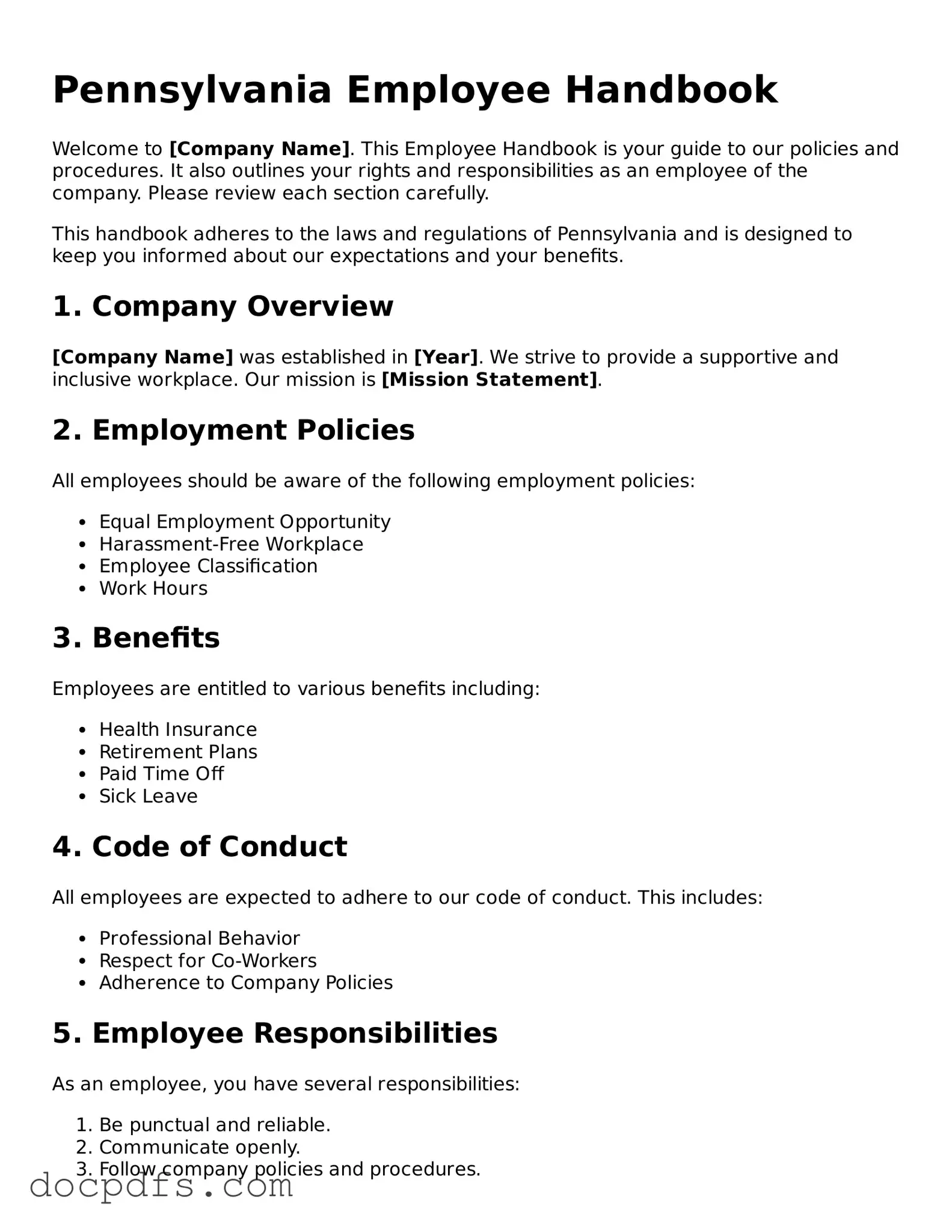Free Pennsylvania Employee Handbook Form
The Pennsylvania Employee Handbook form serves as a vital document that outlines the policies, procedures, and expectations within a workplace. This form not only helps employers communicate their rules clearly but also ensures employees understand their rights and responsibilities. By providing a comprehensive overview of workplace guidelines, the handbook fosters a positive and productive work environment.
Open Employee Handbook Editor Now
